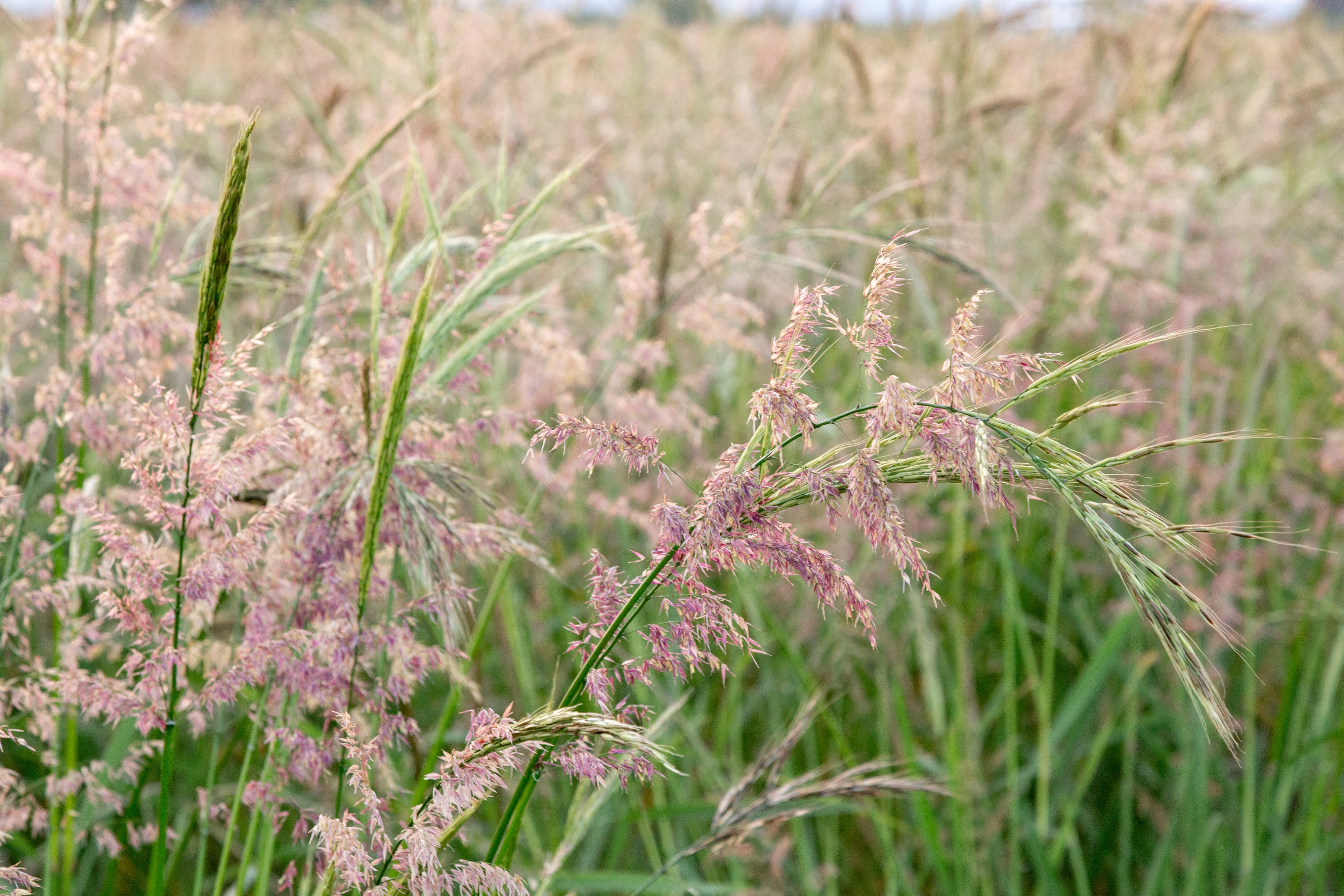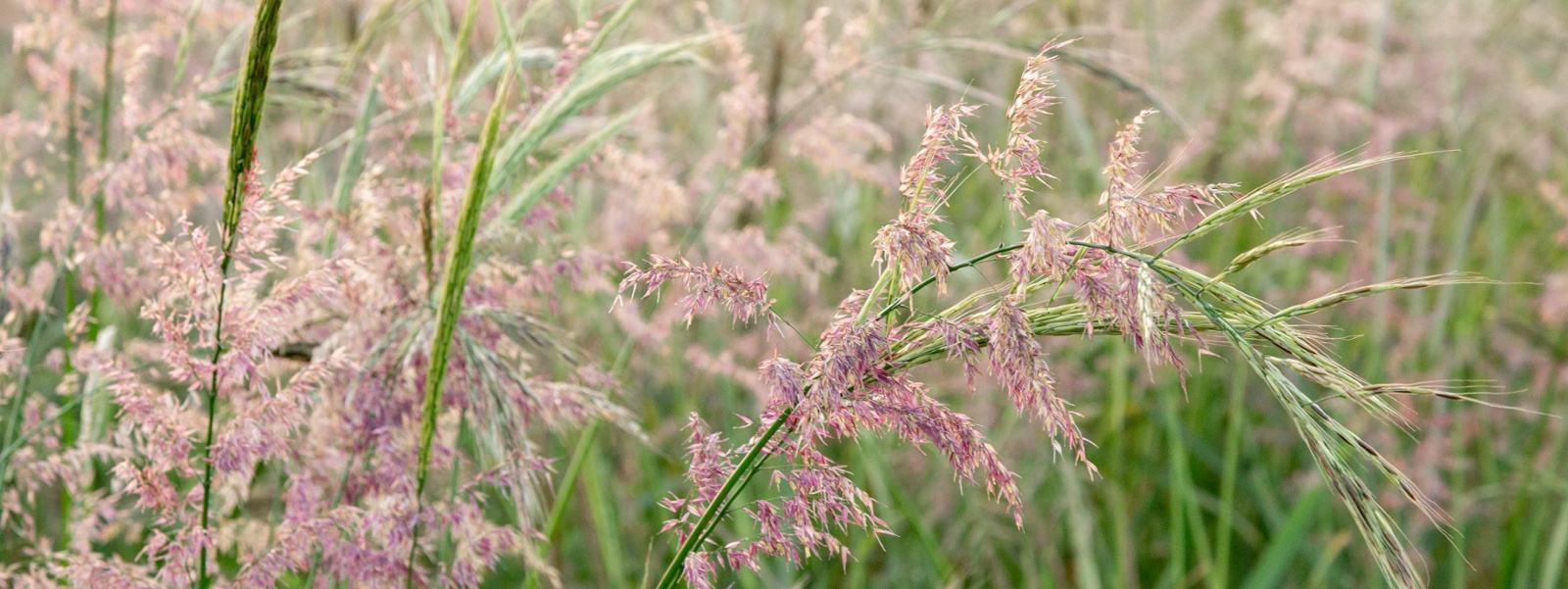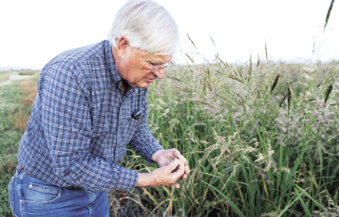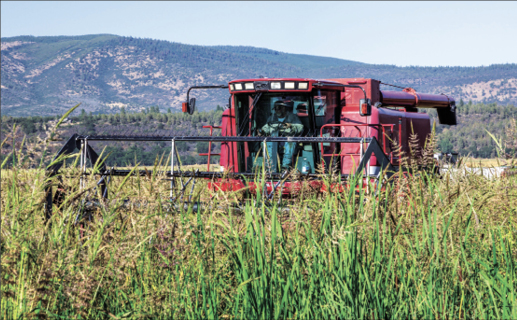Wild rice prices surge as stocks plummet





By Ching Lee
Drained of inventory, California wild rice farmers will reap higher prices for their crop this year, but shorter supplies could slow efforts to expand their reach as they look to develop more markets for the niche grain.
Most of the wild rice this year is expected to come from mountainous regions of Shasta, Lassen and Modoc counties, where harvest continues. There won’t be much coming from the Sacramento Valley, the state’s predominant rice-growing region. Water shortages forced farmers there to idle ground and devote limited water supplies to higher-priced conventional white rice.
The reduced plantings come as wild rice growers celebrate a milestone: It’s been 50 years since wild rice was first cultivated in California. The Golden State has been growing wild rice commercially for 45 years, according to the California Wild Rice Advisory Board. Today, the state produces about half the world’s wild rice, with Minnesota being the other major player.
“The U.S. is one of the main suppliers,” said Elizabeth Carranza, the advisory board’s director of trade and technical affairs. “There’s not a significant amount of competition globally for wild rice, which I guess is an advantage. But less production means less consumption as well—and less consumer awareness.”
She said the board is trying to change that by promoting wild rice and educating consumers about it so that when growers have greater volumes to sell, people will buy it.
Even though it’s called wild rice, the plant is not the same species as conventional white rice, though both are grasses in which the seeds are harvested for grain, said Whitney Brim-DeForest, a University of California Cooperative Extension wild rice advisor.
In the 40 years he’s been growing wild rice, Shasta County farmer Jim Rickert has seen state acreage reach as high as 20,000. In recent years, plantings have been between 9,000 and 10,000 acres, with the bulk of it in the northern region. It’s been trending that way because growers in the Sacramento Valley would rather grow conventional rice, which has “fairly attractive prices,” Rickert said.
With wild rice earning a better market price this year, he said it should be a profitable crop, even as production costs have soared.
“But I don’t think it’s going to be so profitable that we’re going to see a lot of people trying to expand the business either,” Rickert added.
The price this year is 92.5 cents per pound of green, unprocessed rice—up from 75 cents last year. That’s still lower than the $1 per green pound Rickert earned for his first crop in 1982. Over the years, prices have dropped to as low as 35 cents, he noted.
“We had great prices and excess profits in the early years, and we had ruinous competition as a result of that,” Rickert said.
In years when the price of conventional rice was less profitable, more farmers switched to growing wild rice, creating an enormous surplus that “haunts you forever,” he said. Growing demand along with a burgeoning inventory hasn’t been easy, he said. To get big companies interested in wild rice, growers needed a reliable supply, he said, but state production has varied greatly because of fluctuating acreage and sometimes crop failures.
“Wild rice is one of the really bizarre crops where it’s either feast or famine,” said Leslie Boyle, operations and sales manager for Alturas Ranches in Modoc County. “You’ll have a horrible crop, or you’ll have these huge bumper crops,” which can oversupply the market and drive down prices for the next two years.
Larry Erickson, who operates Gibbs-California Wild Rice, a processor in Sutter County, said because of the “hills and valleys with supply and the price,” companies that developed rice blends using wild rice have had to “walk away from it, saying you guys need to get your act together and have a steady supply.”
“We’ve lost a lot of business because these big companies pay a lot for shelf space. If they can’t get the product, it doesn’t work for them,” he said.
In addition to buying, selling and processing wild rice, Erickson’s family in recent years also started farming the grain in Lassen County near Susanville. Due to water shortages, he said the farm did not grow any wild rice this year.
Even with the higher price, Erickson said he doesn’t expect to see wild-rice acreage surge, in part because of limited seed availability. Unlike with other commercial crops, growers of wild rice must anticipate market demand a year in advance by producing seed for next year’s crop. With lower supplies of the rice—and with growers reporting average yields—he said he thinks prices “will be at least as high as this year, probably a little higher.”
John DeWit, who grows wild rice in Yolo and Sacramento counties, is one of only a few growers who planted the grain in the Sacramento Valley this year. But he planted less because of reduced water supplies.
“The price for conventional rice has increased so much, so guys who do have access to water and dirt are moving away from the wild rice to get that added premium,” he said.
DeWit said he continues to grow wild rice so he can stay in the market, as he grows and stores his own seed. Wild rice is also a part of his heritage, he noted, as his late father “was a huge leader in bringing wild rice to the state.” Plus, he’s developed relationships with buyers and mills, he said, and doesn’t want to burn those bridges.
“(Wild rice) offers lots of flexibility at planting,” he added. “I can plant it in late June and July and still get a viable crop.”
Though most of the U.S.-grown wild rice ends up in the domestic market, Carranza said the advisory board is trying to promote the product in foreign markets. Before the Russia-Ukraine war, Russia had been a key export market. The board has since shifted its focus to the United Kingdom, where “the product isn’t really available, so there isn’t a lot of awareness,” she said. Other export markets include Belgium, Italy and the Netherlands. She said the board is also trying to obtain market access to China.
Lack of consumer awareness and misconceptions about wild rice have been a huge challenge, said Rendy Christie, who markets wild rice for Alturas Ranches.
When she attends trade shows to promote the product, Christie said people she encounters don’t know about the nutritional value of wild rice—that it has more protein than most other grains. They also don’t know how to cook it or think it’s hard to cook. Some remember eating it years ago when the product was not scarified, a process that scratches the outer bran layer and reduces the cooking time.
With not much inventory and less acreage, she said marketing this year’s crop won’t be a problem. “Right now, it’d be great to have a whole bunch of it,” she said, “because nobody else does.”
(Ching Lee is an assistant editor of Ag Alert. She may be contacted at clee@cfbf.com.)




